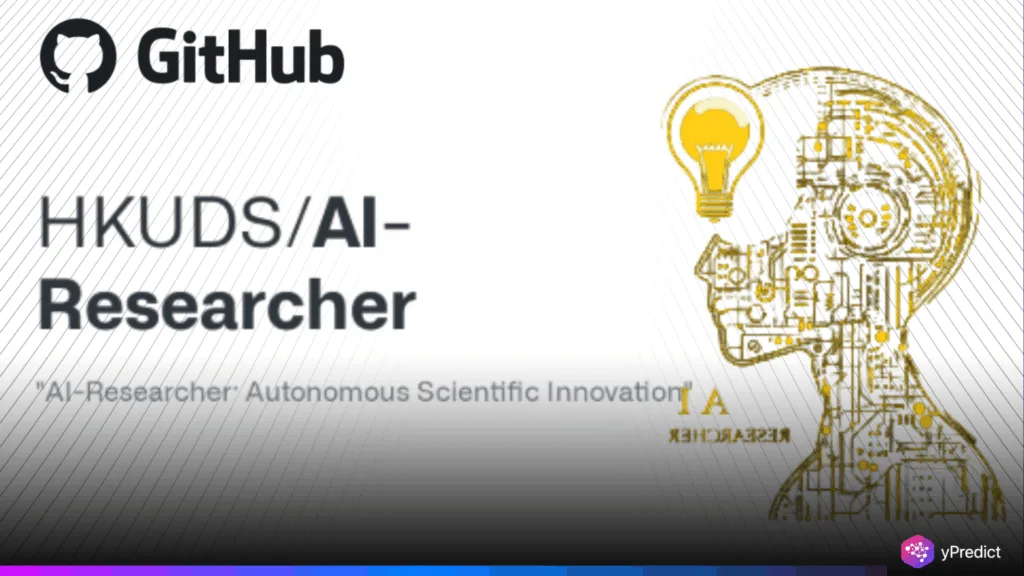
The scientific research landscape is amid a profound transformation, as showcased in today’s X post by Rohan Paul. The spotlight is on “AI-Researcher: Autonomous Scientific Innovation,” unveiled by the HKUDS group from the University of Hong Kong. This AI-powered platform automates the entire research lifecycle, from ideation to publication, in less than three hours. The system merges containerized multi-agent large language models with practical outputs such as codebases, GUIs, and Docker stacks, seizing the attention of the global research community. Notably, rapid community contributions on GitHub underscore its commitment to open science and collaborative advancement.
Features and Performance: A GitHub-Driven Revolution
AI-Researcher excels through a multi-agent LLM pipeline designed for total automation in research. It proposes fresh ideas based on user input, conducts literature reviews, develops algorithms, runs experiments, and drafts manuscripts, all autonomously. Its products are material and open-source in being available as repositories on GitHub. Where an implementation of algorithms can be downloaded. A Docker stack can be used to reproduce the results. The user is able to make improvements to the underlying codebase. Owing to its excellent architecture, the platform has over 2,000 stars on GitHub. The documentation, example projects, and test suites being available in the community.
The system’s benchmark achievements, like an 81% novelty score and a 0.92 F1 score against human-written papers. Validated through GitHub-hosted datasets and result logs. On GitHub, the platform tracks issue submissions ranging from bug reports to feature requests, illustrating continuous development. The dual-level user input model allows researchers to initiate projects from scratch or build on reference papers. Lowering the barrier to entry for scientific work. The GitHub wiki serves as a living manual, where contributors elaborate on system features and suggest enhancements. Such as refined model prompts or expanded domain coverage.
Technological Underpinnings: Open-Source Innovation at Scale
AI-Researcher’s foundation is its multi-agent architecture, which utilizes several autonomous LLMs communicating to orchestrate each phase of the research pipeline. The entire workflow, from literature synthesis to experimental validation, is documented extensively on GitHub. Dockerfiles and workflow automation scripts available for reproducibility. The choice of Docker containers streamlines deployment across platforms, and GitHub Actions facilitates automated testing and continuous integration. Recent Anthropic research on multi-agent collaboration informs GitHub pull requests for improved agent coordination in the system.
People involved in the work carefully follow individual aspects of the system idea generation, algorithm design, data analysis, and manuscript writing using GitHub issue boards, allowing them to check the work and suggest any possible improvements. The project uses GitHub pages to provide a dynamic report on the completed project, benchmark scores, and community statistics. In addition, the joint work on GitHub builds an international developer community to promote the free exchange of ideas, continuous improvements, and expanded usage.
The Dawn of Collaborative AI Science
AI-Researcher is the cutting edge of self-driven scientific discovery and has a full-featured community on GitHub with cutting-edge technology. The dramatic reduction in the length of the research cycle by its automation, technology-pub, has made science more accessible and has led to life-changing discoveries. The design combination of multi-agent LLMs with reproducible workflows in Docker and the centralization of development on GitHub, where the community can re-create and share a model, practically uses the creation of HKUDS and democratizes development in research at scale. The ethical and validity questions and collaboration with humans and AI are essential as the contributors keep perfecting the platform through GitHub. Not only does this system represent the fast pace of the AI-driven research, but it is also an example of how an international, open-source collaboration can change the future of the scientific world.






